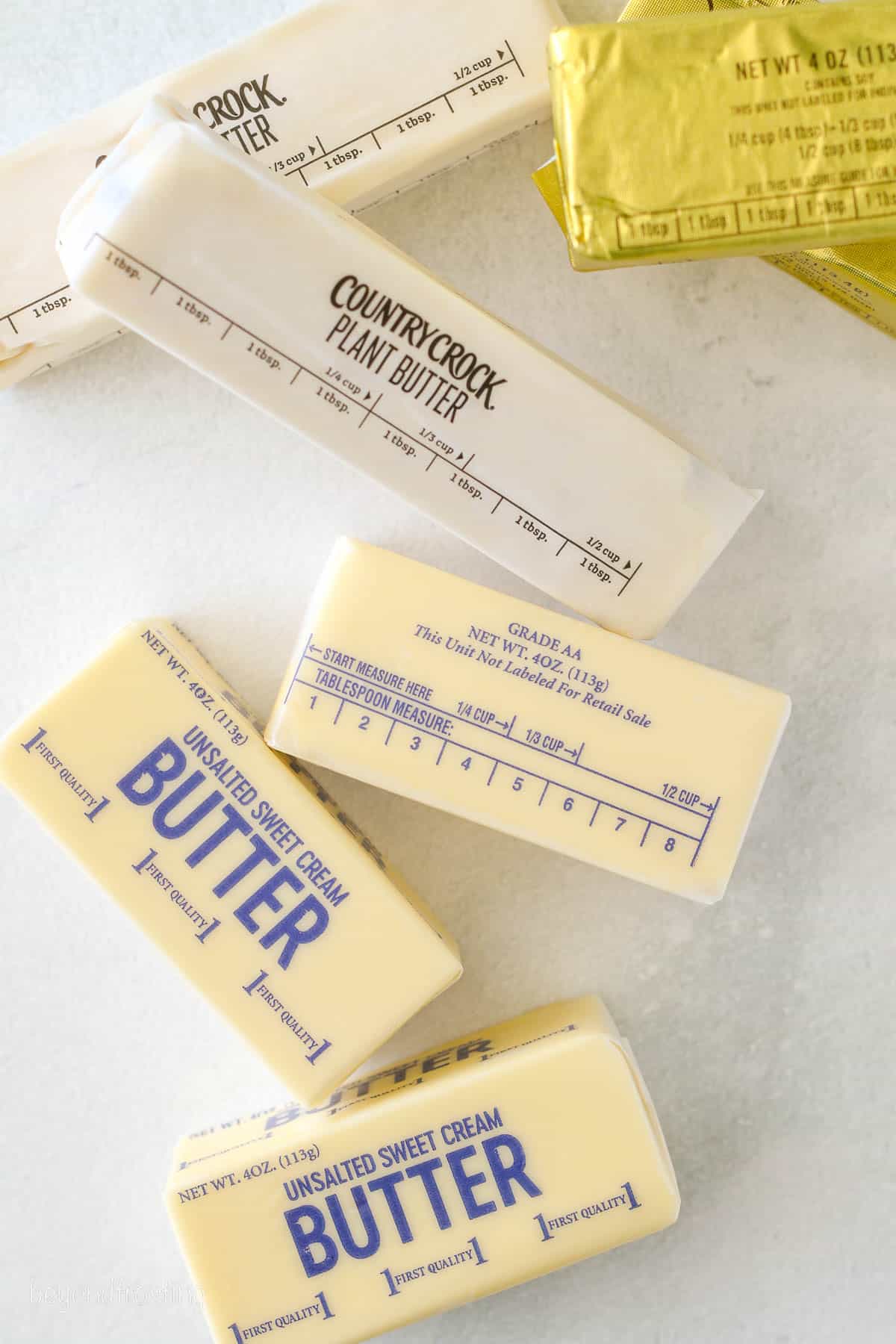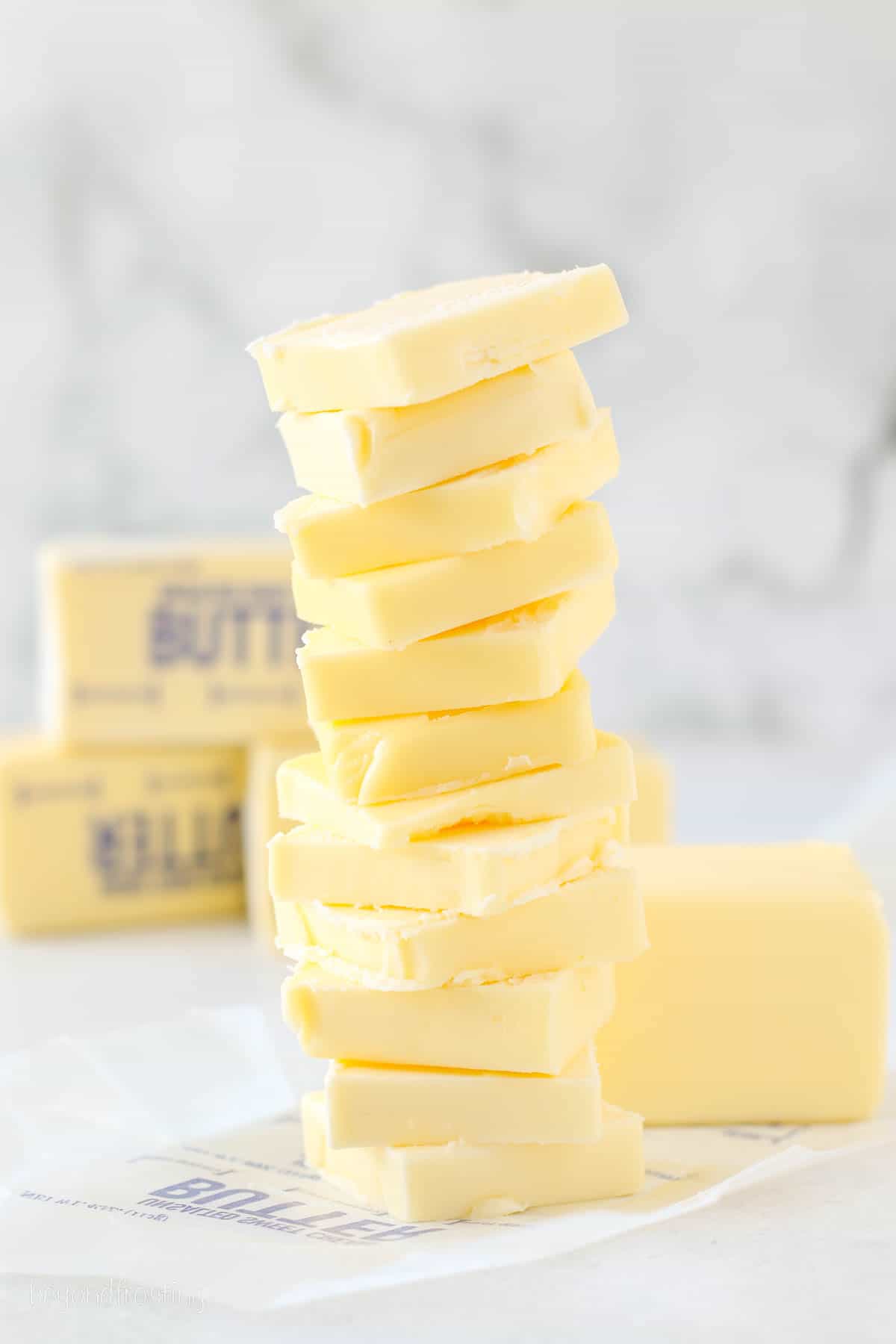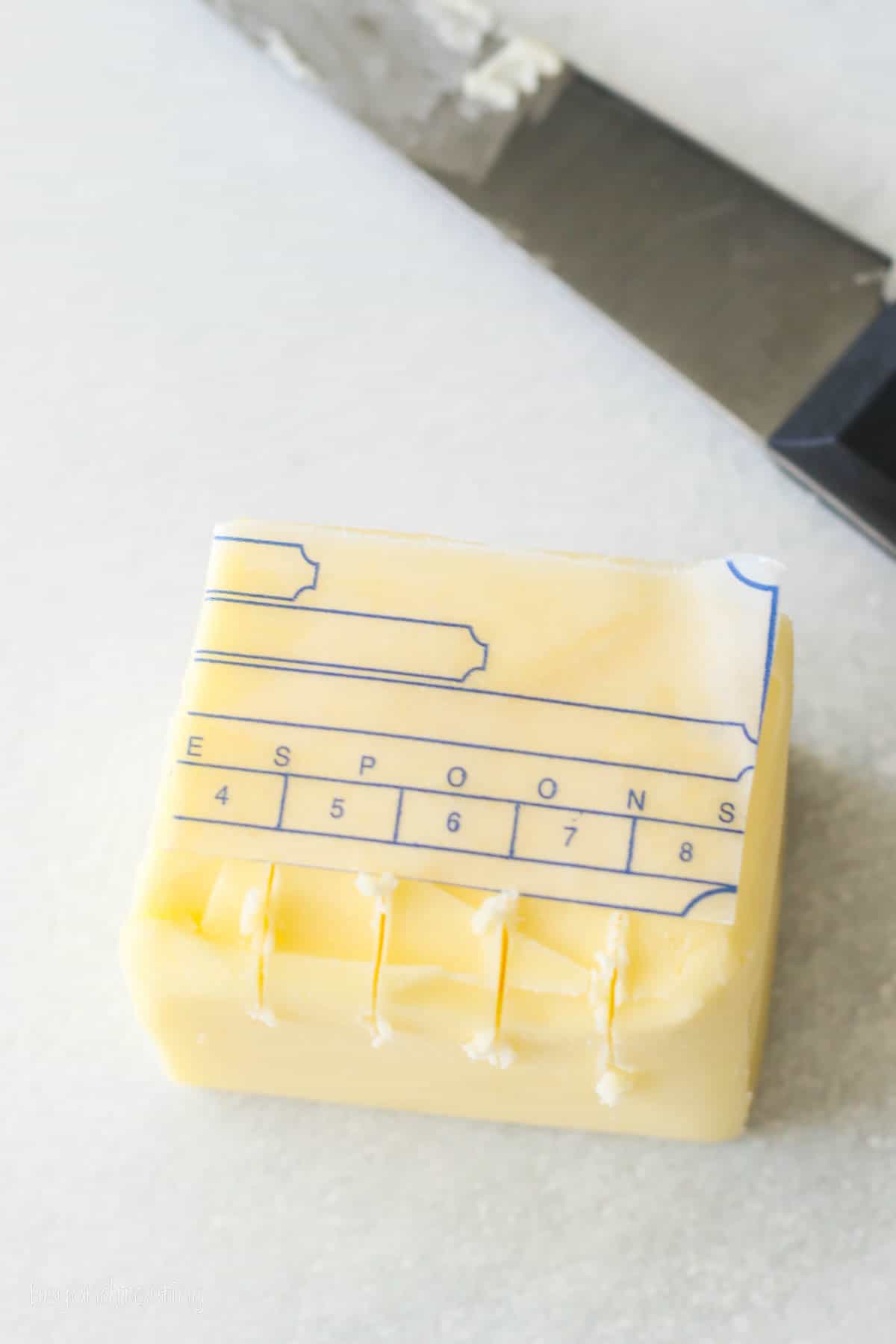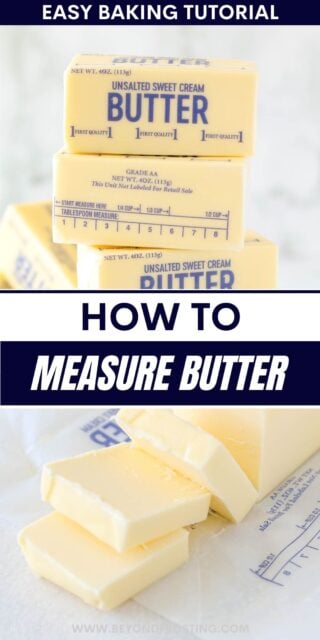When it comes to baking, accurate measurements are key. Let’s break down how many tablespoons are in a stick of butter, so you can measure for recipes with confidence!

How Many Tablespoons Are in a Full Stick of Butter?
As you know, when it comes to successful cooking and baking, accurate measuring is key. Sure, there’s a time and a place for eyeballing (cooking can be much for lenient than baking). More often than not, though, it’s important to take the time to properly measure out your ingredients.
Today, we’re talking butter. Sometimes a recipe will call for a full stick or half-stick, or it may call for sticks when all you have is a 1-pound block of butter. Whenever possible, but especially with baking, I recommend using a food scale to weigh butter for the most accurate results. But we’ll get into that soon enough.
So, how much does butter weigh? How many tablespoons are in a stick of butter? These are some of the burning questions we’ll cover below. Let’s dive into a deeper understanding of measuring butter, for the best results when baking.

What is a Stick of Butter?
Fun fact: a “stick of butter” is more than just a literal stick of butter. In the US, it’s an actual unit of measurement in baking. You’ll often find butter sold in rectangular blocks that are designed to make measuring easier. Sticks of butter come in two common sizes: a half-stick, and a full-stick. In the US, a full stick of butter equals ½ cup, while a half-stick measures ¼ cup.
In theory, if a recipe calls for one stick of butter, you can simply chuck in the whole block, and so on. However, things get complicated when it comes to dividing sticks of butter into smaller quantities or converting other quantities of butter to “sticks”. This is when it’s beneficial to weigh it, or at least know how many tablespoons are in a stick of butter.

The Trouble With Measuring Using Sticks
As a little experiment, I cut one pound of butter into squares to see how many times I could accurately get 1 tablespoon. Out of the 32 cuts made, only 6 of them were accurate!
Furthermore, not all butter is measured in “sticks” or is packaged in ½ cups. This is especially true for butter from countries outside of the US. So, a “stick of butter” as it’s known in the States can mean something very different elsewhere in the world.
Relying on wrapping alone can be very misleading, as it’s widely inconsistent. Dare I say, no 2 sticks of butter are wrapped the same? Have a look at the photo above. No measurement marking is in the same spot on any of the sticks pictured! Unless the recipe calls for ½ cup (one full stick) of butter, then it’s best to weigh it.

How to Measure Butter
Depending on what a recipe calls for, there are a few different options when it comes to measuring butter. Some are more accurate than others:
- Sticks – You can measure butter using whole sticks or half-sticks if a recipe calls for it (see above). You can also cut butter sticks into smaller quantities as needed. While it’s not always the most accurate, many butter sticks come with demarcated measurements on the packaging. See the section later on for tips on how to cut butter correctly.
- Metric – Weighing butter with a kitchen scale will give you the most accurate measurement. Using the metric system, one stick of butter (½ cup) is 113 grams.
- Cups – Another option is to measure butter using cups. There is ½ cup of butter in one full stick and ¼ cup of butter in a half-stick.
- Tablespoons – For smaller quantities, or for more precise measurements, use tablespoons. There are 16 tablespoons in 1 cup, so there are 8 tablespoons in one full stick of butter.
So, what’s the best way to measure butter? When it comes to baking, the best and most accurate way to measure butter is to weigh it using a kitchen scale. It takes out a lot of guesswork! Meanwhile, when making a dish that calls for smaller, more precise quantities, you can measure butter using tablespoons.

This handy kitchen scale is my more used baking tool, and it’s inexpensive too! The digital scale is lightweight and takes up minimal space.

How Many Tablespoons in a Stick of Butter
When it comes to measuring butter in tablespoons, it’s always helpful to have some quick conversions handy.
- 1 full stick of butter equals 8 tablespoons (½ cup).
- 1 half stick of butter equals 4 tablespoons (¼ cup).
Below is a detailed butter measurement conversion chart that you can refer to:
| Tbsp | Cups | Sticks of Butter |
| 16 | 1 | 2 full sticks |
| 12 | 3/4 | 1 ½ full sticks |
| 8 | 1/2 | 1 full stick |
| 5 + 1 teaspoon | 1/3 | 2/3 stick |
| 4 | 1/4 | 1/2 stick |
| 2 | 1/8 | 1/4 stick |
| 1 | 1/16 | 1/8 stick |
Note that the measurements above are for solid butter, and this table is meant to be used as a guideline. Exact measurements will vary depending on the type of butter you’re using. Melted butter, for example, will measure differently than solid butter (1 cup of melted butter = 2 cups of solid butter).
How Much Does Butter Weigh?
If a recipe calls for “1 stick of butter”, but you don’t have sticks, your best bet is to weigh out the butter you do have, or measure in tablespoons, to ensure you use the right amount. Here are some popular conversions:
- 1 cup of butter = 8 ounces = 226g or 16 tablespoons
- ½ cup of butter = 4 ounces = 113g or 8 tablespoons
- 1 tablespoon of butter = .5 ounces = 14g
How Do I Know Where to Cut a Stick of Butter?
If you don’t have a food scale, many butter sticks come in packaging with lines or markings that indicate where to cut for ½, ¼, ⅓ cups, etc. It’s your best bet in a pinch. Counting the lines on a butter stick is the best way to tell where to cut. Make sure you’re using a sharp knife for the best accuracy! I recommend scoring the butter before cutting using the wrapper, and cutting straight down.
As an example, let’s say that a recipe calls for ⅓ cup of butter. If you’re using butter sticks, this equals ⅔ of the stick. If your butter stick comes with three lines, simply count two lines from one end, and cut. Otherwise, count the total number of lines, divide it by 3, and count the appropriate number to find the ⅔ mark.






